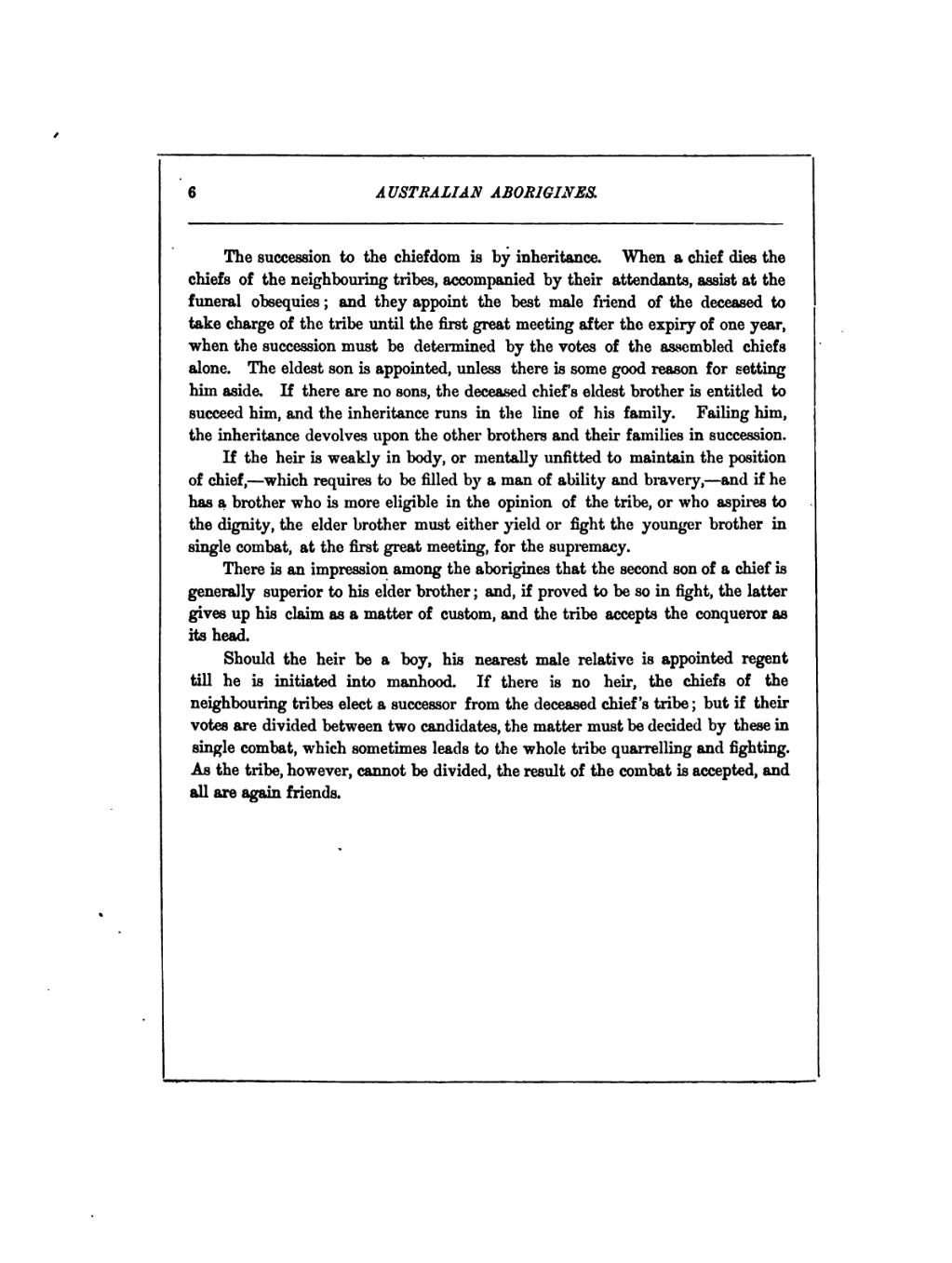The succession to the chiefdom is by inheritance. When a chief dies the chiefs of the neighbouring tribes, accompanied by their attendants, assist at the funeral obsequies; and they appoint the best male friend of the deceased to take charge of the tribe until the first great meeting after the expiry of one year, when the succession must be determined by the votes of the assembled chiefs alone. The eldest son is appointed, unless there is some good reason for setting him aside. If there are no sons, the deceased chiefs eldest brother is entitled to succeed him, and the inheritance runs in the line of his family. Failing him, the inheritance devolves upon the other brothers and their families in succession.
If the heir is weakly in body, or mentally unfitted to maintain the position of chief, — which requires to be filled by a man of ability and bravery, — and if he has a brother who is more eligible in the opinion of the tribe, or who aspires to the dignity, the elder brother must either yield or fight the younger brother in single combat, at the first great meeting, for the supremacy.
There is an impression among the aborigines that the second son of a chief is generally superior to his elder brother; and, if proved to be so in fight, the latter gives up his claim as a matter of custom, and the tribe accepts the conqueror as its head.
Should the heir be a boy, his nearest male relative is appointed regent till he is initiated into manhood. If there is no heir, the chiefs of the neighbouring tribes elect a successor from the deceased chief's tribe; but if their votes are divided between two candidates, the matter must be decided by these in single combat, which sometimes leads to the whole tribe quarrelling and fighting. As the tribe, however, cannot be divided, the result of the combat is accepted, and all are again friends.
